
The Spark Creativity Teacher Podcast | Education
Betsy Potash: Education Blogger + Curriculum Designer
Creative and Quick Classroom Ideas for English teachers
- 9 minutes 57 seconds293: Creative Exam Review Activities for ELA (that don't involve a packet)
With exam season coming up, you're probably looking for some creative ELA review activities.
Whether your school requires that students sit a traditional exam, or you have room for something like the graduation speech final or another type of final project, it's helpful to look back over the big concepts, themes, and texts you've covered as the year draws to a close.
So what options do you have besides printing out a 20 page review packet and giving students time to study it? A lot, as it turns out. Today we're going to explore five of them, in hopes that you'll find a match that feels just right to you.
Before we get started, I want you to know that I'll be running Camp Creative, The Easiest Roadmap to Student Podcasting, in June. Inside this (free) and fun PD, you'll get access to the best models, easiest tech, and complete curriculum to get you and your students started with podcast projects. Everything arrives by email, so even if you're busy the week of June 10-14, you can catch up whenever you get a chance. It just takes 10 minutes a day to go through the materials!
Links Mentioned:
Grab your Copy of the Review Quiz Game Here: https://docs.google.com/presentation/d/1s2HlNyX8Zh9_WYnJsZmTgbbLvGjewzhDnAn8aPgXg2U/copy
Sign up for Camp Creative Here: https://sparkcreativity.kartra.com/page/camppodcasting2024
Go Further:
Explore alllll the Episodes of The Spark Creativity Teacher Podcast.
Join our community, Creative High School English, on Facebook.
Come hang out on Instagram.
Enjoying the podcast? Please consider sharing it with a friend, snagging a screenshot to share on the ‘gram, or tapping those ⭐⭐⭐⭐⭐ to help others discover the show. Thank you!
30 April 2024, 9:50 am - 4 minutes 29 seconds292: Try the Sesame Street Quiz (5 Different Ways)
Today, I want to highlight a useful tool Amanda Cardenas shared earlier this year on the show called The Sesame Street Quiz. It’s so versatile, so fun, and so helpful that I feel it deserves a show of its own, so here we go.
Amanda has already shared with us how these work, back in episode 267.
Here’s a quick review:
A Sesame Street Quiz gives students four items. Three are connected and one is an outlier. For example, if you’re reading Chapter 2 of The Great Gatsby, you might give students the options: Daisy, Jordan, floating, red. Which three are connected and why? Which one is the outlier and why? Amanda lets kids use their book and notes as they respond.
Now, think about this idea of a Sesame Street Quiz. It’s a great way to check in and see which kids are doing the reading, and understanding the reading. But how else might you use it?
It could make a great bellringer or discussion warm-up. Have students make their decisions alone or with a partner, justifying their choices.
It could make for an intriguing way to review before a final exam. Invite students to consider the key texts of the term, and choose which ones go together and which is an outlier.
It could lead into a fascinating one-pager assessment, with kids creating a visual representation of the three that group together and integrating quotations and analysis in their own words of why those three link.
It could be a helpful exit ticket, to see how well students digested the material from the lesson if you’ve been deep diving into a text.
I bet you can think of lots more uses as well! But however you use it, this week I just want to highly recommend that you give a Sesame Street question a try ASAP.
Related Links:
Episode 267, with Amanda Cardenas: https://nowsparkcreativity.com/2024/03/so-your-students-arent-doing-the-reading-heres-help.html
Explore more of Amanda's work: https://www.mudandinkteaching.org/
Go Further:
Explore alllll the Episodes of The Spark Creativity Teacher Podcast.
Join our community, Creative High School English, on Facebook.
Come hang out on Instagram.
Enjoying the podcast? Please consider sharing it with a friend, snagging a screenshot to share on the ‘gram, or tapping those ⭐⭐⭐⭐⭐ to help others discover the show. Thank you!
25 April 2024, 2:54 pm - 29 minutes 14 seconds291: When Genius Hour WORKS (The Elective Series)
Have you ever wished you could get students excited about genius hour, then immediately wondered what you’d do if half of them couldn’t think of a topic? Well, today on the podcast, creative teacher Melissa Moser is here to talk about one of her favorite electives to teach - Genius Hour, and exactly how she sets students up for success - even the ones who just don’t know what passion to pursue when it comes to a passion project.
This is a topic near and dear to my heart, and I think you’re going to love all the specifics Melissa shares.
Ooh, and real quick, if you’re wondering what I mean by genius hour, I’d like to suggest you hit pause and go back to episode 122, The Ultimate Guide to Genius Hour. You’ll enjoy this amazing case study so much more once you understand exactly what it means to give your students the time and space to study their own greatest interests in a genius hour project. OK, let’s dive in!
Links from Today's Episode:
The Ultimate Guide to Genius Hour (Episode 122)
Information about The Lighthouse
Go Further:
Explore alllll the Episodes of The Spark Creativity Teacher Podcast.
Join our community, Creative High School English, on Facebook.
Come hang out on Instagram.
Enjoying the podcast? Please consider sharing it with a friend, snagging a screenshot to share on the ‘gram, or tapping those ⭐⭐⭐⭐⭐ to help others discover the show. Thank you!
23 April 2024, 1:01 pm - 5 minutes290: Try this Hack to Teach Varied Sentence Structure
Welcome to the Thursday edition of The Spark Creativity Teacher Podcast, a podcast for English teachers in search of creative teaching strategies. Whether you’re new to the show or a long-time listener, I’m so glad you’re here for this week’s mini episode. Today, I want to share a fun visual trick for helping students vary their sentence structure.
I never really thought about sentence length until I was writing professionally. Sure, I knew to avoid run-on sentences, how to wield a semicolon, and what an appositive could do. But really it was when I realized I wanted to vary my sentence LENGTH in the articles I was writing for other websites that I started playing with structure more.
I wanted punchy moments.
I also wanted long, detailed stories that could twist and turn through the text, capturing my reader’s imagination with sensory imagery and vivid descriptions.
The combination of both led to more exciting writing with more varied types of structure. It’s not that I went into a line thinking “I want to use an appositive, three commas, and a semicolon here.” It’s that I was trying to write a long sentence after a short sentence, so I experimented.
There’s an easy way to guide students to do the same thing. I call it “Shaped Stories.” Simply create a handout or slide with a photo at the top, and a big black rectangle down below. Then add white rectangles on the big black one, each a space for students’ sentences going down the page, and make the white rectangles different sizes. Leave a tiny rectangle where a sentence will have to be just two or three words. Then add a wide, tall one where a sentence would have to be complex to fill it. Then try medium-size, and so on and so forth down the page.
When you invite students to set a story inside the picture prompt at the top, ask them to fill each box completely with their sentences. Show them your example, and feel free to review a few types of sentence structures that might help them out.
When it comes to varied sentence structure, shaped stories are an easy (and fun) hack for helping students practice. That’s why this week I want to highly recommend you take a peek at the visuals in the show notes for inspiration and then give it a try.
Go Further:
Explore alllll the Episodes of The Spark Creativity Teacher Podcast.
Join our community, Creative High School English, on Facebook.
Come hang out on Instagram.
Enjoying the podcast? Please consider sharing it with a friend, snagging a screenshot to share on the ‘gram, or tapping those ⭐⭐⭐⭐⭐ to help others discover the show. Thank you!
18 April 2024, 1:57 pm - 10 minutes289: How to Launch Book Talk Podcasts in Class
Book talk podcasts can provide gentle choice reading accountability, target presentation of knowledge and speaking skills, and build a library of book recommendations for future students.
Not bad, right? Today on the podcast I'm going to walk you through how to launch a book talk podcast with your students, and why it will be fantastic.
Example Script: https://docs.google.com/presentation/d/1Aj__-O8kwEJTXr_-3o7AU9B15sSQYIIFyn-cy-HSkUQ/edit?usp=sharing
Go Further:
Explore alllll the Episodes of The Spark Creativity Teacher Podcast.
Join our community, Creative High School English, on Facebook.
Come hang out on Instagram.
Enjoying the podcast? Please consider sharing it with a friend, snagging a screenshot to share on the ‘gram, or tapping those ⭐⭐⭐⭐⭐ to help others discover the show. Thank you!
16 April 2024, 1:04 pm - 5 minutes 7 seconds288: A Lesser-Known Amanda Gorman Gem
Welcome to the Thursday edition of The Spark Creativity Teacher Podcast, a podcast for English teachers in search of creative teaching strategies. Whether you’re new to the show or a long-time listener, I’m so glad you’re here for this week’s mini episode. Today, as earth day inches closer, I want to share a favorite find, Amanda Gorman’s video poem “Earthrise.” This beautiful poem could fit in so many different places in your curriculum, so let’s talk about them.
First of all, let me tell you a bit about this poem, which of course I’ll link in the show notes. It’s shared on Youtube by The Climate Reality Project, and it’s from five years ago, before Amanda Gorman stormed the world scene with her inauguration poem. It’s a performance piece with video footage of Amanda and of the world intermingled as the tells the story of the first astronaut to see the world from space, then connects the way he saw the earth rise with the idea that we can confront the issue of climate change and make our own individual positive impacts and see our own earthrise. It’s a lovely, inspiring call to action which acknowledges this big, weighty issue without making things feel hopeless.
I can think of three ways you might use this poem which I’ll share here.
First, you could use it as a springboard to a project about influence, and what it means to be an influencer. Amanda Gorman uses her social media profiles, her performances, and her poetry to lend strength to causes she cares about. In a social media-driven world, she stands out as a youth icon who continuously searches out ways to use her influence positively. You could look at examples of her influencer work and her cause-driven poems and have your students create projects related to the nature of influence and what types of influencer they want to be influenced by.
Second, you could use this poem as a springboard for a video poetry project. Whether your students create their own original pieces or create a video around a poem they love, this is a chance to use their voices and their visuals to bring out the meaning behind a piece. Teach them the 3 second rule, that the angle or shot almost always changes every 3 seconds in professional video, and have them spot it in “Earthrise.” Then let them create a poetry video of their own, using the techniques you identify together in Gorman’s piece.
Third and last, you could use this poem as a springboard for a call-to-action poem. Have students consider the issues that matter most to them. Have them analyze how Gorman builds energy and hope in her poem with her literary and performance choices. Then have them use it as a mentor text to create their own poem calling people to hopeful action to make a difference in the issue that matters to them.
This one piece is, of course, the tip of the iceberg when it comes to Amanda Gorman’s work. This week I want to highly recommend you check it out as a wonderful starting point, and perhaps it will lead you down a lovely rabbit hole of her work and all the many ways it could fit into your curriculum.
"Earthrise" by Amanda Gorman: https://www.youtube.com/watch?v=xwOvBv8RLmo
Go Further:
Explore alllll the Episodes of The Spark Creativity Teacher Podcast.
Join our community, Creative High School English, on Facebook.
Come hang out on Instagram.
Enjoying the podcast? Please consider sharing it with a friend, snagging a screenshot to share on the ‘gram, or tapping those ⭐⭐⭐⭐⭐ to help others discover the show. Thank you!
11 April 2024, 10:09 am - 28 minutes 40 seconds277: How Erica Used the AI PBL Project to give her Students Voice
It’s never a bad thing when your classroom innovation lands you at a press conference with your state’s department of education!
That’s what happened to today’s guest, Erica Kempf. She decided to try out the project-based-learning unit I designed about the ethical use of artificial intelligence, and along the way she and her students made it their own and became the go-to sources for AI in their district.
They learned a lot in the process, and I’m so excited to have Erica here to share her story with you. Before we dive in, just a heads up that you can grab the free PBL AI curriculum set that Erica and her students used right here. So if you get inspired as you listen, you can download this unit for yourself and give it a try!
Grab the Full (Free) PBL AI Unit Here: https://sparkcreativity.kartra.com/page/aipbl
Go Further:
Explore alllll the Episodes of The Spark Creativity Teacher Podcast.
Join our community, Creative High School English, on Facebook.
Come hang out on Instagram.
Enjoying the podcast? Please consider sharing it with a friend, snagging a screenshot to share on the ‘gram, or tapping those ⭐⭐⭐⭐⭐ to help others discover the show. Thank you!
9 April 2024, 1:26 pm - 3 minutes 36 seconds276: Let All Books Count: A Tale of Two Kids
Welcome to the Thursday edition of The Spark Creativity Teacher Podcast, a podcast for English teachers in search of creative teaching strategies. Whether you’re new to the show or a long-time listener, I’m so glad you’re here for this week’s mini episode. Today, I want to talk about a much-debated subject - when it comes to choice reading, what counts and what doesn’t?
If you’ve been here with me for long, I bet you can imagine that a lot of books were involved in the early life of my own children. They had tiny themed board book displays before they could roll over, and we were a constant at our little local library. But after their baby years, my two kids’ reading paths diverged, wildly.
My son’s path has been like mine. He went through epic series after epic series, hit the children’s classics, and is now deeply entrenched in wonderful fantasy books that he reads to himself every night, unless he’s not feeling well, in which case he plugs in an audiobook.
My daughter’s path, not so much. If I had a quarter for every time I’ve offered to read to her, tried to hand off a book I was sure she would love, or invited her to read with me and gotten turned down - very politely - I could probably book us into Club Med for the weekend.
Helping her become fond of books has been an eight year project, and lately I feel like I’m seeing it happen. But it’s been VERY heavy on three formats, and they happen to be much debated as “real” reading - graphic novels, re-reading old favorites, and audiobooks.
For my youngest, becoming a reader has meant listening to soooooooooo much Junie B. Jones and Ramona. It has meant reading all 18 of the hilarious graphic novel series, The Bad Guys, and suddenly announcing that it was “Better than eating candy.” It’s meant careful tiny steps forward with print text, one page at a time, in books about subjects she absolutely loves, like young girls discovering their magical connection to elemental horses.
Without the re-reading, the audiobooks and the graphic novels, I’m pretty sure I’d still be getting that polite smiling “no thank you, Mama” everytime I reached for a book.
It can be hard - believe me I know - to see a kid re-read an old book or plug into an audiobook - when you really want to see them explore new titles and improve their print comprehension. And I’m all for encouraging students to keep trying a lot of different things, and even to read two or three books at a time - maybe an old favorite, an audiobook, and a little bit of something new and challenging. I often have this pattern going in my own life. But this week I just want to highly recommend that we remember, all books are part of the journey to becoming a reader. Rereading, graphic novels, and audiobooks might just be a student’s gateway to a lifetime of reading.
Go Further:
Explore alllll the Episodes of The Spark Creativity Teacher Podcast.
Join our community, Creative High School English, on Facebook.
Come hang out on Instagram.
Enjoying the podcast? Please consider sharing it with a friend, snagging a screenshot to share on the ‘gram, or tapping those ⭐⭐⭐⭐⭐ to help others discover the show. Thank you!
4 April 2024, 12:37 pm - 13 minutes 26 seconds275: Teaching SciFi & Fantasy (The Elective Series continues)
We’re about to dive into an elective that combines Beowulf, The Hobbit, Ursula Leguin, graphic novels, and contemporary YA! What holds all these threads together? That’s what repeat guest and creative teacher Caitlin Lore is about to tell you as we continue our series on creative electives across the country. Get ready for the big reveal in just a moment.
Go Further:
Explore alllll the Episodes of The Spark Creativity Teacher Podcast.
Join our community, Creative High School English, on Facebook.
Come hang out on Instagram.
Enjoying the podcast? Please consider sharing it with a friend, snagging a screenshot to share on the ‘gram, or tapping those ⭐⭐⭐⭐⭐ to help others discover the show. Thank you!
2 April 2024, 11:22 am - 3 minutes 2 seconds274: Using Students’ Love of Youtube to our ELA Advantage
Welcome to the Thursday edition of The Spark Creativity Teacher Podcast, a podcast for English teachers in search of creative teaching strategies. Whether you’re new to the show or a long-time listener, I’m so glad you’re here for this week’s mini episode. Today, I want to talk about Youtube, and how we can use students’ love for it to our ELA advantage.
One of my goals for this year is to create the curriculum for an elective based on Youtube. I’ve recently watched my son go through the transition from watching Disney Plus and Netflix in his chill time to watching exclusively Youtube creators. He learns magic and parkour skills from them, watches them unbox things he loves, and generally would rather be subscribing to their channels than being entertained by the billions of dollars behind the entertainment industry. He’s already made the first video for his own channel, and he was willing to work through a LOT of frustrations as he tried to figure out the problems of audio, angle, lighting, script, theme, file size, and everything else required.
I’m sure you’ve seen this same interest in Youtube in student after student.
So what does that mean for us, as educators? There’s an incredible hook here for our students. I’m thinking about a Youtube elective (or unit) that looks at so many ELA skills that matter in our students’ communication, through the lens of video. Hooks. Closings. Making an argument. Sharing research. Interviewing. Documenting. I’m imagining projects like short documentaries, time lapses, mini profiles, travel videos about your local community, PSA videos about issues kids care about, video versions of college essays or performance poems. The 21st century skills are EVERYWHERE, no matter what topics you and your students choose to dive into.
I could go on and on and on, and maybe later, in another episode, I will. But for now, I just want to highly recommend that we consider Youtube an ally in our teacherly quest to help kids see just how relevant ELA is to their real life lives. You only have to look as far as the National Geographic, New York Times, and White House channels to know that Youtube plays a highly significant role in communication today.
Go Further:
Explore alllll the Episodes of The Spark Creativity Teacher Podcast.
Join our community, Creative High School English, on Facebook.
Come hang out on Instagram.
Enjoying the podcast? Please consider sharing it with a friend, snagging a screenshot to share on the ‘gram, or tapping those ⭐⭐⭐⭐⭐ to help others discover the show. Thank you!
28 March 2024, 1:04 pm - 7 minutes 15 seconds273: First Chapter Friday: Nancy Tandon Reads
Welcome to the author spotlight series at Spark Creativity.
In this series, you’ll hear from authors sharing their work directly into your classroom. So sit back and listen in. Today we’re hearing from Nancy Tandon, reading from her book, The Way I Say It.
Nancy has worked as an elementary school teacher, a speech-language pathologist, and an adjunct professor of Phonetics and Child Language Development, all of which helped plant seeds for stories about awesome kids doing brave things.
Her debut middle grade novel, The Way I Say It (Charlesbridge, 2022) was an American Booksellers Association Indies Introduce and Indies Next pick as well as a Junior Library Guild Gold Standard Selection.
My hope is that you’ll play this episode to your students on an upcoming Friday, sharing the guiding sketchnotes handout below with them so they can jot down their key takeaways as they listen.
Grab the Novel-Specific Sketchnotes Sheet: Click here
Play it from Youtube for your Students: https://youtu.be/CE6UDEl9p5Y
Learn more about author Nancy Tandon: https://nancytandon.com/
Go Further:
Explore alllll the Episodes of The Spark Creativity Teacher Podcast.
Join our community, Creative High School English, on Facebook.
Come hang out on Instagram.
Enjoying the podcast? Please consider sharing it with a friend, snagging a screenshot to share on the ‘gram, or tapping those ⭐⭐⭐⭐⭐ to help others discover the show. Thank you!
26 March 2024, 1:37 pm - More Episodes? Get the App
Your feedback is valuable to us. Should you encounter any bugs, glitches, lack of functionality or other problems, please email us on [email protected] or join Moon.FM Telegram Group where you can talk directly to the dev team who are happy to answer any queries.
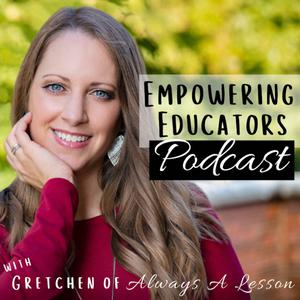 Always A Lesson's Empowering Educators Podcast
Always A Lesson's Empowering Educators Podcast
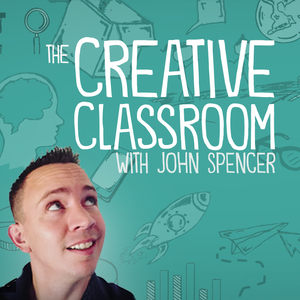 The Creative Classroom with John Spencer
The Creative Classroom with John Spencer
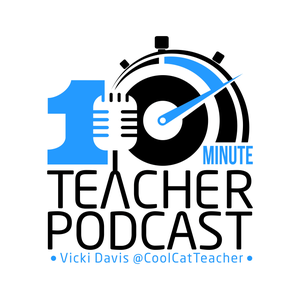 10 Minute Teacher Podcast with Cool Cat Teacher
10 Minute Teacher Podcast with Cool Cat Teacher
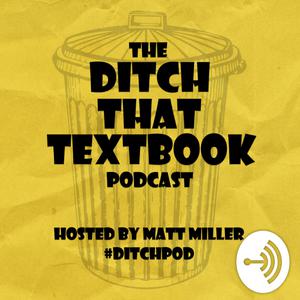 Ditch That Textbook Podcast :: Education, teaching, edtech :: #DitchPod
Ditch That Textbook Podcast :: Education, teaching, edtech :: #DitchPod
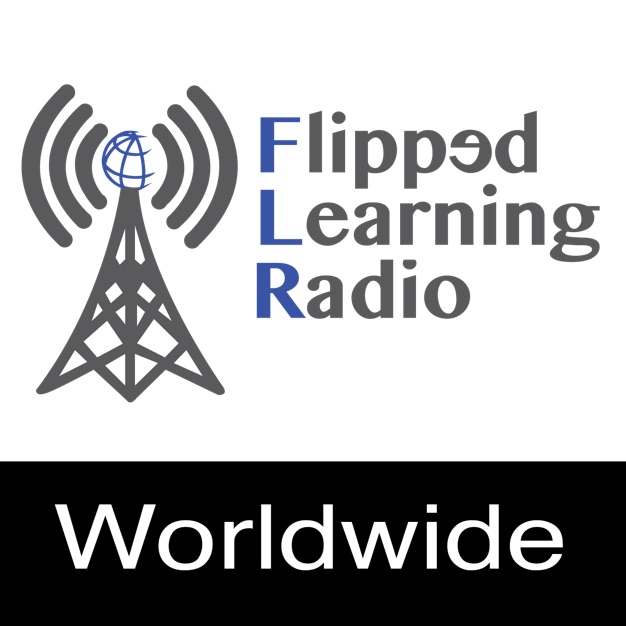 Flipped Learning Worldwide
Flipped Learning Worldwide
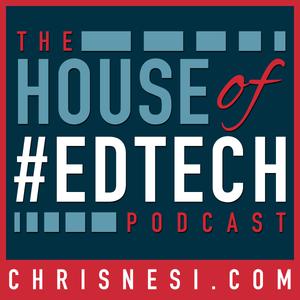 House of #EdTech
House of #EdTech